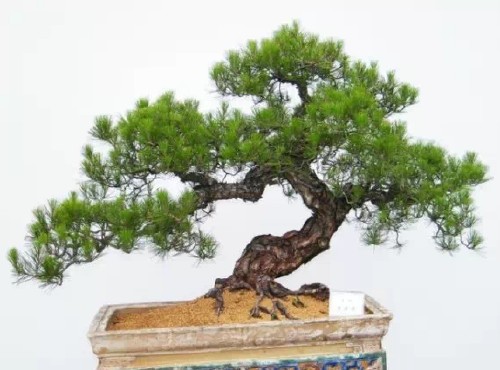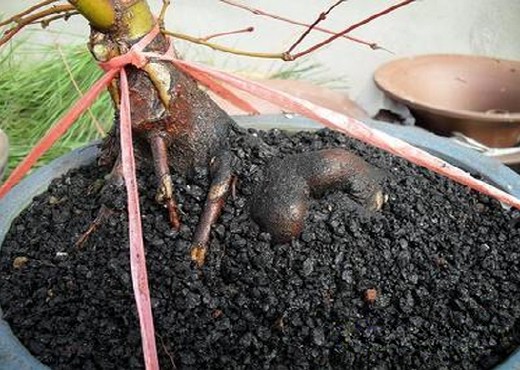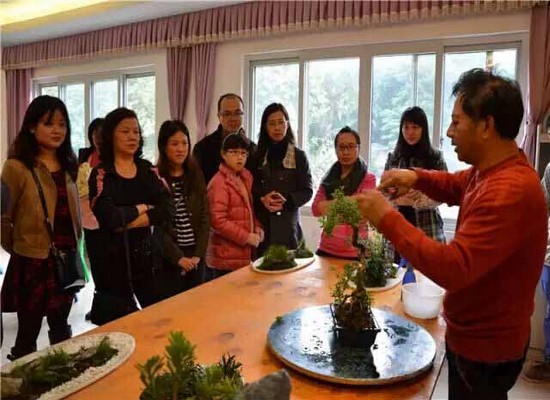Key points and matters needing attention in the production of mountain pine bonsai
Mountain pine, also known as Masson pine, common tree species, can make bonsai material is relatively rare, and slow growth, production and maintenance is difficult, but the tree type is beautiful, can show a variety of artistic conception, so it is more precious. Main points of production:

1. Pile picking: before and after the resin germination of the Beginning of Spring, take the soil mass and protect the fibrous root, the soil mass should not be loose (this is the key to survival), seal the root head and wound, remove 2/5 to 1/2 of the branch and leaf quantity, and maintain the balance between the root and the branch. The transplanting of Pinus elliottii is best during the period from the Beginning of Spring to the Spring Equinox, when the survival rate of transplantation is the highest. In the case of stinging to the Spring Equinox transplant, Komatsu has bare roots or loose soil, and it is easier to survive. Transplanting mountain pine can carry soil as soon as it can. When transplanting, dig a circle and tie it up with rubber, then cut off the main root, and transport the plant back to planting as soon as possible after coming out of the nest.
2. Planting: use a wide soil basin, and it is best to plant in a wooden box or on the ground. Use soil loose and breathable and hygienic, not disinfect and sterilize. When 2/3 of the soil is cultivated, the water is absorbed once, and the next day, 1/3 of the dry soil is used to absorb moisture to maintain proper humidity. In the initial stage, in order to prevent long-term rainy days, you can put a circle of plastic film around the slightly higher soil to cover the pot or tree nest. Take shelter from the wind, warm and sunny place. Mix the soil with yellow soil, red soil and coal cinder. You can also use yellow soil Gaza, or yellow soil plus coal cinder. It is best not to use pure sand. When planting, you should use a stick to intercalate the seed, and then pour enough water to fix the root.
3. Management: proper shading at the initial stage and all-day sunshine after survival. Keep well ventilated. The basin soil is dry and wet, slightly dry. Use fertilizer routines. Spray more foliar water every day. After the mountain pine survives, put it in a sunny place (preferably more than ten hours a day), which is conducive to the accelerated growth of branches and leaves of mountain pine and promote the emergence of new roots.
4. Don't put too much faith in the words of "dry pine and wet cypress". In the growing season, as long as the drainage is good and the soil is breathable, it doesn't hurt to water every day.
5. It is best not to use glazed pots to plant mountain pines, but to use pots larger than soil lumps (my mountain pines are basically planted in wooden cases).
6. Modeling: the combination of cutting, climbing and grafting. Pay attention to sprouting and sprouting during the growth period.
Note:
1. Pinus elliottii is an all-day plant, but it can't be exposed in summer. Lack of sunshine will lead to poor growth.
2. Clean old needles and dead needles frequently and maintain a proper amount of needles to facilitate ventilation and lighting.
3, relatively fixed maintenance position, do not move frequently.
4. The pruning and grafting wounds must be sealed in time to prevent the loss of turpentine.
5. Pinus elliottii is a shallow root tree species, so it is not suitable to be planted deeply.
6. Pinus elliottii has higher requirements for soil and should be taken seriously.
7. when there are no branches and leaves on the branches of Pinus elliottii, it is easy to shrink and die.
At the initial stage, pay attention to the wind and shock, so as not to shake the tree and pull the root. Small trees are fixed by piling, while big brackets are fixed.
Time: 2019-05-26 Click:
- Prev

Propagation and grafting technique of Acer maple bonsai
Acer chinensis is widely used in urban gardens. It not only has independent landscape representation, but also is an important combination material for landscapes, architecture, roads, sculptures and fountains in gardens. It is suitable for planting in lawns, mounds, stream banks, pool banks or decorated wall corners, pavilions and flower beds, as well as courtyard roadsides and windows.
- Next

Small potted plants change pots, pot, production steps
Lecturer introduction: Chen Wanjun, Lingnan bonsai artist, president of Jianghai District Flower Bonsai Association
Related
- Fuxing push coffee new agricultural production and marketing class: lack of small-scale processing plants
- Jujube rice field leisure farm deep ploughing Yilan for five years to create a space for organic food and play
- Nongyu Farm-A trial of organic papaya for brave women with advanced technology
- Four points for attention in the prevention and control of diseases and insect pests of edible fungi
- How to add nutrient solution to Edible Fungi
- Is there any good way to control edible fungus mites?
- Open Inoculation Technology of Edible Fungi
- Is there any clever way to use fertilizer for edible fungus in winter?
- What agents are used to kill the pathogens of edible fungi in the mushroom shed?
- Rapid drying of Edible Fungi

